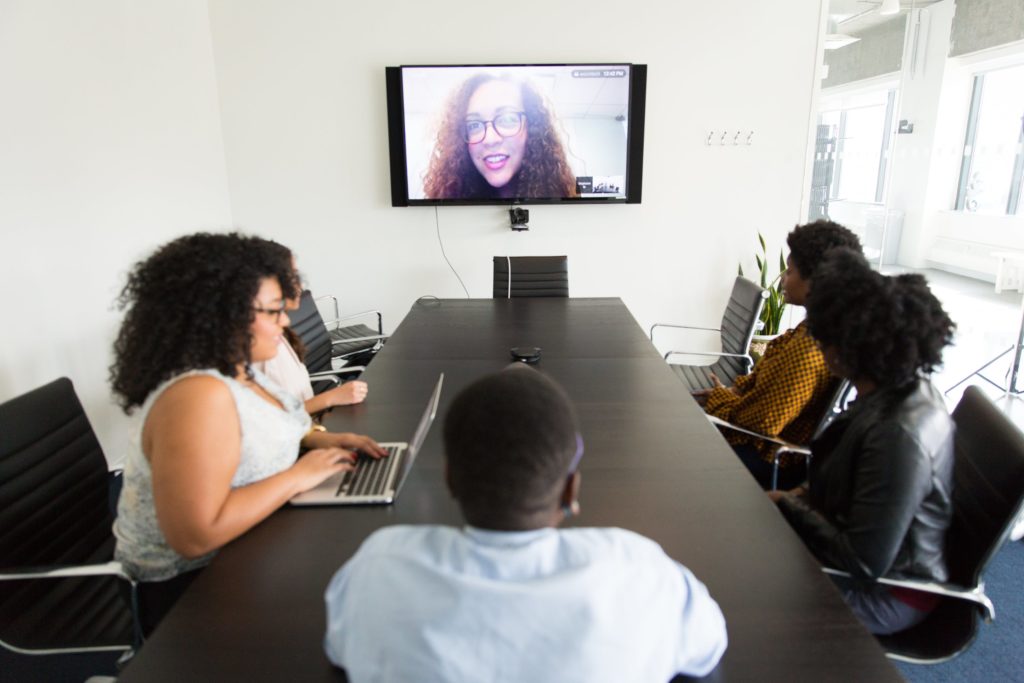Understanding the tumultuous events of 2020 gives business leaders an insight into the kinds of performance management trends 2021 might bring, allowing them to adapt to existing challenges and maintaining the flexibility required to adapt to future uncertainties. Current trends in performance management are intrinsically linked to the rise of individuals and teams working remotely, requiring new modes of communication to ensure the workforce remains connected.

Read on to find out how business leaders are leveraging the latest trends in performance management to effectively plan for 2021 and beyond, offering resilience to future upheavals including pandemic lockdowns and the consequences of Brexit.
Data-driven HR administration and performance management
The seemingly exponential rate of technological development has meant that the collection, analysis and reporting of data have become increasingly important to companies throughout 2020, and will only grow in significance as businesses begin to plan head for 2021. HR departments deal heavily with data, and the use of analytics allows HR administrators to apply analytics to a wide variety of metrics, covering absenteeism, turnover rates, and revenue per employee.
By integrating HR-related analytics with performance management tools, businesses are able to maximize their data for an additional layer of oversight into their processes. Performance-related data can be analysed via custom performance dashboards, which managers can use to view individuals and teams to track their progress and development in real-time, with far greater accuracy and accountability.
From this data, key issues in performance management can be identified and addressed, for example by linking sickness and absence data with an employee’s ability to deliver objectives and key performance indicators (KPIs).
Onboarding, offboarding and transitioning remote workers
One of the first major tasks for HR leaders and managers in January 2021 will likely focus on onboarding new hires and transitioning existing workers into new roles. January is the most popular month for job changes, so preparing for this influx of largely remote workers means HR leaders need to streamline a variety of processes while drawing on data analytics to ensure their efforts are effective.
Automating these processes with worksheets can save HR administrators a great deal of time, disseminating policies, culture, expectations for the role and any points of contact the new hire should be aware of. HR admin tools allow managers to tailor these processes to cater for various requirements, for instance updating roles and contacts for employees crossboarding to another department.
Offboarding provides leaders with an opportunity to learn why people leave the business and adapt their strategy accordingly. Logging grievances and understanding what motivates employees to leave means that HR teams can make better hiring decisions, identify potential new hires with the appropriate skill sets to bring value to the company.

Understanding the employee experience
Businesses without robust mechanisms in place for tracking employee experience were at a significant disadvantage when the lockdowns were imposed in spring 2020. With much of the workforce shifting to remote working, the absence of systems to help understand the employee experience meant that leaders and managers were often blind to the challenges their employees were facing, or what they required to stay engaged with their work.
Performance management tools are likely to play an increasingly important role in understanding the employee experience throughout 2021. Such tools allow managers and leaders to:
- Work with employees to set development objectives. Linking an individual’s development objectives with the broader aims of the company aligns goals while giving a sense of united purpose and shared values.
- Engage employees via news feeds and social intranet. Individuals and teams working remotely need to be kept in the loop, and news feeds allow managers to bypass clunky emails and deliver crucial information in real time. Social intranets provide the “digital watercooler” experience to allow for the free exchange of ideas.
- Gather regular employee feedback. Regular feedback via multi-channel communications and eNPS surveys allows businesses to adapt to new challenges on the fly and keep their finger on the pulse of employee sentiment.
- Improve motivation through recognition and awards. With managers no longer able to congratulate individuals and teams for a job well done in person, digital awards and recognition offer an alternative way to celebrate great performance.
Adapting performance management for the younger generation

With millennials and Gen Z making up the majority of the workforce in 2020 the future of performance management will require an evidence-based understanding of what engages and motivates young employees, and a culture that reflects their expectations and ambitions.
The Deloitte Global Millennial Survey 2020 highlighted a number of key issues in performance management that companies need to address as they move into the new year. Diversity and inclusion, reskilling, sustainability and other issues of concern for millennials lead to an increase in job loyalty when businesses place an emphasis on them, and the result of such action is “more millennials saying they’d like to stay with their employers for at least 5 years than would prefer to leave within 2 years.”
The survey notes, “This is unprecedented since Deloitte first asked this question in our 2016 survey. It remains to be seen, though, how loyalty will be affected by the pandemic.”
Rethinking performance appraisals
Ongoing feedback continues to be the most effective approach to feedback from successful companies. Recent trends in performance appraisals urge leaders and managers to shift away from traditional annual performance appraisals, instead of adopting an approach that values continuous feedback, conducted via performance management tools in direct relation to current objectives, and complimented with regular one2ones and check-ins.
Performance management software that allows HR and team managers to create customized review templates can save valuable time, streamlining the structuring and scheduling of everything from monthly and quarterly reviews, probation reviews and regular one2ones. Managers can set the desired time intervals between appraisals, as well as the parameters of the discussion, from progress towards objectives to any issues regarding performance.
Performance management tools can also assist with gathering 360 feedback, creating branded templates that establish different sets of questions to segmented audiences. Department heads, team leaders, colleagues and external customers can all receive tailored 360 feedback forms, allowing HR managers to circumnavigate communication issues caused by extensive remote working practices.
Millennials and Gen Z employees who are accustomed to the constant feedback provided by social media are particularly responsive to ongoing feedback. By using feedback to create a constant dialogue, leaders can address millennial uncertainty and provide them with the necessary tools to improve their skills and develop in line with the company’s broader goals.
Embracing employee well-being
The global coronavirus pandemic combined with economic uncertainty and lockdowns has led to an unprecedented rise in mental health problems in 2020, with rates of depression soaring. A sobering report from the British Medical Journal found that rates of suicidal thoughts in the UK saw significant increases in young adults, creating new challenges for businesses when it comes to a compassionate approach to the well-being of their employees.
The aforementioned Deloitte study offers further insight into the situation: “Close to half (48%) of Gen Z and 44% of millennial respondents in the primary survey said they’re stressed all or most of the time. But in the pulse survey, anxiety levels fell eight points for both generations, indicating a potential silver lining to the disruption caused by the pandemic.”
Prior to the pandemic and rise of remote working, businesses had a number of options to help employees maintain physical and mental well-being, through programs such as free gym memberships, yoga classes, and providing staff with fresh fruit and other healthy eating options in the workplace. Moving beyond 2020, however, and companies need to adopt a digital strategy that tracks sentiment and helps provide employees with the support they need.
By establishing a performance management process that encompasses continuous engagement via multi-channel feedback, businesses will be best positioned to engage and motivate employees, encouraging a positive attitude focused on the development of new skills which are aligned to the core values of the company.





